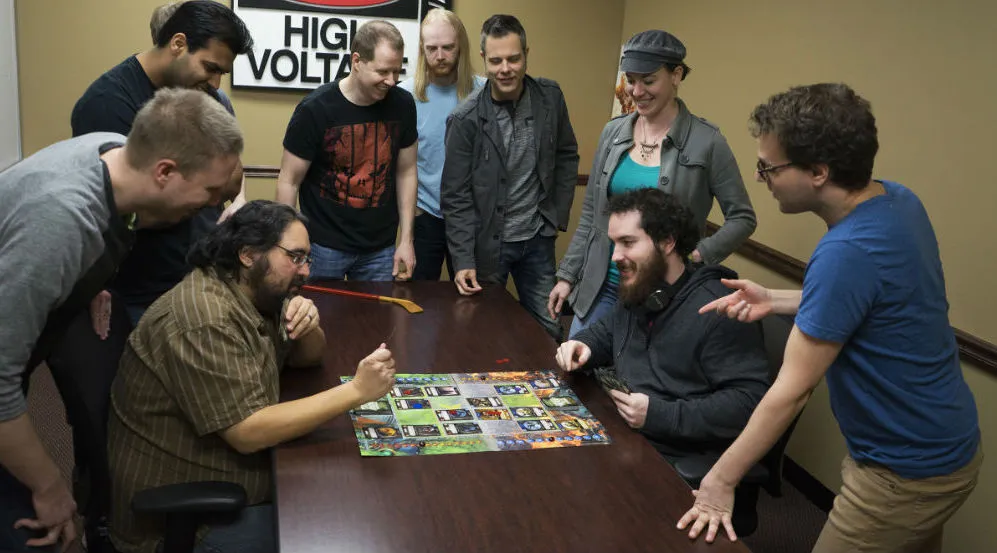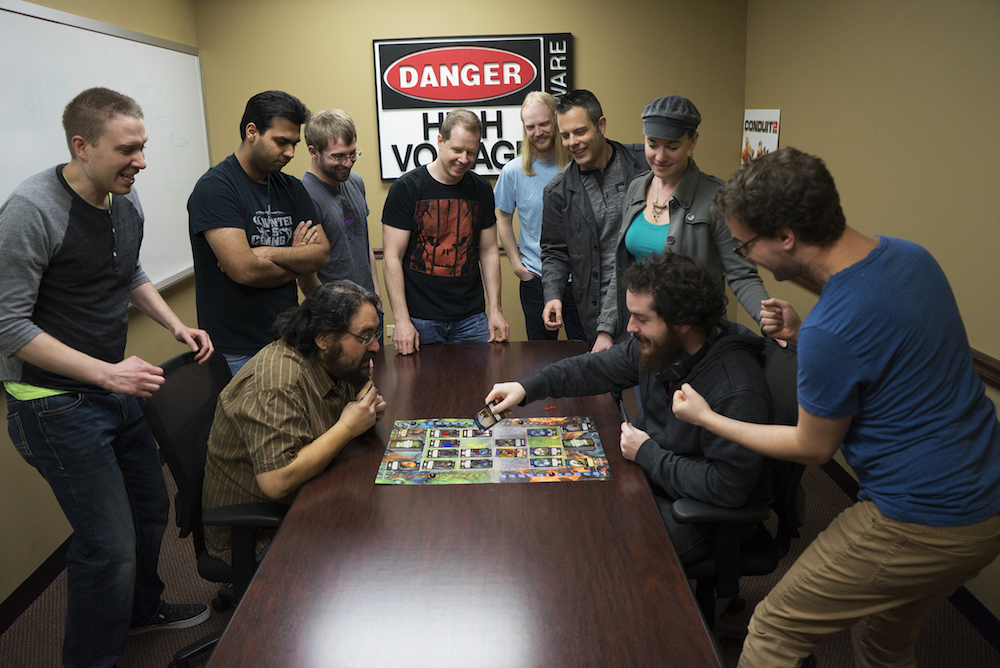Dragon Front, virtual reality collectible card game coming to the Oculus Store from High Voltage Studios bears some similarities to earlier titles like Hearthstone and Magic: The Gathering. Unlike the digital versions of those other games, however, Dragon Front will feel incredibly close to the real thing — so much so that you can look over at the other player and watch their head movements for hints of what might be planned.
In a recent interview with UploadVR High Voltage’s CCO Eric Nofsinger revealed some new details about the Oculus exclusive game, including that they company actually created a physical card game version during the development process.
“We wanted to provide that intimate feeling of playing a card game or a board game with somebody,” he said. “We’ve been working on the digital format of this game for a little over a year. We started by working on a physical version of it first and letting the physicality of it work out and then figuring out how we could translate that to VR.”
The translation of a physical card game into VR took the form of an active diorama-style viewpoint that sees players presiding over their virtual troops from above. You, the player, will be represented in the game as a “deity mask” which will sync with your head movements in the real world so your opponent can see where you are looking – and what you might be plotting – during your turn.
Nofsinger also explained that card selection, miniature interaction, and traversal around the game board will all be done through gaze-targeted selection. You merely have to look at the card you want to play or the troop you want to command in order to select it. Manipulation of the selected asset can then be done with the Xbox controller or the bundled Oculus Remote, which is Nofsinger’s preferred method of play.
“360 gaming allows you the opportunity to feel like you’re playing across the table with somebody,” Nofsinger said. “To be able to lean down and look at the miniatures as they’re animating on the play space is really cool and something you couldn’t do on a traditional console or PC game…It’s natural to simply look at a unit and see what it’s about.”
One of the questions going in to the age of consumer VR is how are developers planning to monetize these experiences? Hearthstone, which Nofsinger says was an inspiration for Dragon Front, utilizes the popular free-to-play model. We asked if that was a model Dragon Front was considering as well.
“We’re not announcing a pricing strategy yet. We’re still weighing out what is fair,” he said. “But looking towards the other kind of products that are out there [like Hearthstone] would be a smart bet to see where we’re trying to land. I think Hearthstone has a fair model.”
Hearthstone from Blizzard Entertainment has been well received since the game’s launch. It essentially allows for all in-game items to be potentially acquired through gameplay alone, but impatient or zealous customers can pay real money to unlock cards and features more quickly.
Nofsinger believes that by developing Dragon Front for VR his studio has created a CCG experience that’s entirely new. A fundamental desire to bring tabletop experiences to players that may be separated by thousands of miles is what established the basic design structure for the game.
High Voltage Studios’ other Rift title, Damaged Core, is an first-person shooter that will release around the same time as Dragon Front, though neither title will be available at launch. Nofsinger indicated that, depending on demand, a physical card game version of Dragon Front could be coming to store shelves as well.



























